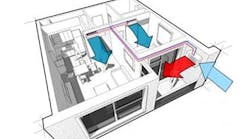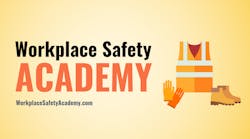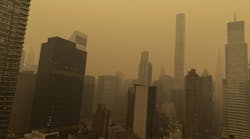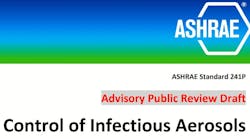From the ContractingBusiness.com HVAC-Talk.com discussion forum, here are some topics being discussed related to indoor air quality (IAQ). There’s much happening in this too-often ignored service
sector, and much you can learn from your peers on HVAC-Talk.com.
Here are some of the threads you can find related to indoor air quality. Opinions and advice are those of the participants. Comments have been edited for space or clarity.
YOU CAN FIND ADDITIONAL DISCUSSION THREADS AT bit.ly/IAQChats
Is Radon Detection Still Popular? Is it Needed?
A1: If your house is not under a negative pressure and not sealed too tightly, radon won’t come into the house, because it’s a heavier-than-air gas. Radon is one of the densest gases on the periodic table. It’s eight times heavier than air, so it must be brought into the house from a negative pressure condition.
This is why a heat recovery ventilator (HRV) works so well. The more negative pressure sources, such as bathroom and kitchen fans, that are bringing in as much air as they are removing, the less negative pressure your house becomes.
Along with an HRV/ERV, I recommend a 4-in. duct running from the outside to your return air duct, to maintain a neutral pressure when the blower isn’t operating, and a slightly positive pressure when it is. I also recommend ECM blowers using the lowest possible speed, to keep a continuous air exchange in the home and to keep the home at a constant, slight positive pressure. — RoBoTeq
A2: I used to be in the radon business, but I got out. I didn’t believe I was providing any value to my customers. I had a run-in with the EPA at a school where they wrote a letter that was in direct opposition to their published material, that scared the school and parents enough that they removed free-standing HEPA filtration systems in classrooms.
The alleged death statistics are from models. One synopsis of the causes of lung cancer I read managed to account for as many as 117 deaths for every 100 people who died. I guess they counted some people multiple times.
I’m getting ready to install an ERV in my home with the exhaust coming from the bathrooms and the supply going into the living and/or sleeping areas. My intent is to balance it so that I maintain a very slight positive pressure in my home. I will lower carbon dioxide (CO2) levels without as large an energy penalty and prevent soil gases of any kind from entering my home. Anything that does sneak in will be diluted. I personally am convinced that this will do far more for my health and comfort than any traditional radon mitigation system.
EPA’s risk model assumes that you are exposed to the level of radon in question for 18 hours per day for 70 years. — Dirk Roper, ex-Radon services provider
Seeking Tips for CAV and VAV in a School
Our schools all have constant air volume (CAV) terminal boxes with fans and hot water reheats. They obviously have a constant air volume setpoint in the controls. I am in the process of changing the controls in one of the schools to a variable air volume (VAV) setup with a minimum and maximum CFM setpoint. I’m also adding CO2 sensors at the returns in the mechanical rooms. Is there any disadvantage to this? I can only see energy savings, but I know air changes are critical when you are dealing with enclosed spaces like classrooms. — HVAC supervisor for a school district
A: if you’re switching from CAVs to VAVs, you’ll have to modify your air handler or rooftop by installing a variable frequency drive (VFD) If you don’t, as your newly installed VAVs begin to close down, where will the excess air go?
You’re talking about two different things. CO2 sensors will save you money, but they’re only on the main return air, and they limit bringing in more outside air than necessary for the main air handling unit. On the other hand, terminal units have nothing to do with outside air and CO2 controls.— Superfittertech
Does a Higher MERV Affect Airflow?
A1: The higher the MERV, the more restrictive the filter. The more restrictive the filter, the less the airflow in most situations. — kangaroogod
A2: It depends on whether you have proper return and supply for the system. The higher the MERV rating, the better the filter will filter the air. The trade off is decreased air flow when the filter gets dirty. They market higher MERV filters by showing how the filters can catch more particles, but fail to tell people the flip side: decreased air flow once the filter is dirty. Most homes lack the proper supplies and returns. Plus, most contractors still do put together rules of thumb for sizing ductwork and equipment. If they put together an undersized return and add a pleated filter with a high MERV, and they’ll have a big problem. —Duckman06
A3: Yes, and it’s absolutely noticeable. Any 1-in. pleated filter of a normally selected area will be detrimental to system performance and equipment life if it’s greater than MERV 7. — danswfl
What to do About Mold in Mini-Splits?
A: Any space with organic dust and mold spores that has high humidity continuously for more than 24 hours, without several hours of dry time will start to grow mold. It’s tricky to stop mold from growing. Most people aren’t sensitive to mold, however there are some who become ill from gases that mold growth produces. Fresh air ventilation, +11 MERV filtering, and less than 50%RH most of the time stops most mold growth.
— Teddy Bear
Have You Tried Duct Sealing?
A1: I use the Aeroseal product at least two times a week, if not more. The solvent doesn’t settle anywhere but where there’s high velocity. Depending on the system, many times there’s a slight fog in the house. It isn’t toxic, and it doesn’t settle. We have large scrubber fans, which is a big fan with four 20 x 20 filters all around it. I have probably been involved in over 30 of these so far.
— Joseph12345
A2: The company I worked for 13 years ago was an Aeroseal dealer. Aeroseal has s a great system. My area is flex-duct land, so it doesn’t make much sense to use Aeroseal in most cases. It’s expensive to get set up as an Aeroseal contractor, so it’s not something my current employer is interested in. My previous employer sub-contracts the service, so we’ve used them the few times, when we run into an existing metal duct system that needed extensive sealing.
This contractor sends a crew with the Aeroseal logo on their truck and uniforms. The price is reasonable enough that we can make some profit from it, but still is much less expensive than hand-sealing an existing metal duct system.— Mark Beiser
Do UV Lights Work?
A: It seems the consensus ranges from they (UV lights) are witches’ brew, to they cure cancer. Some people state that air passes too quickly for the UV lights to be effective. On the Liebert commercial units I have, the UV light is above the water tray that holds water for humidification.
I would question the, “friends say they work great” issue. By what standard are they stating that opinion? The fact is that his 20-year-old 8 SEER HVAC system was replaced with a brand new one using a variable speed AHU with a 4-in. filter and a UV light.
Was his duct work cleaned? If not, and the customer still has medical issues, how does a little UV light make allergy/illness issues go away?
On the other hand, if the duct work was cleaned and UV light was added, and no one gets sick, well, you get the point. UV lights are cost effective and relatively simple to install, so if a customer wants it, it should be a non issue. — Riderman









